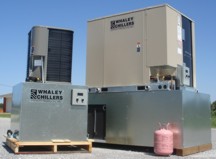Positron emission tomography (PET) is a test that uses a special type of camera and a tracer (radioactive chemical) to look at organs in the body.
During the test, the tracer liquid is put into a vein (intravenous, or IV) in your arm. The tracer moves through your body, where much of it collects in the specific organ or tissue. The tracer gives off tiny positively charged particles (positrons). The camera records the positrons and turns the recording into pictures on a computer.
PET scan pictures do not show as much detail as computed tomography (CT) scans or magnetic resonance imaging (MRI) because the pictures show only the location of the tracer. The PET picture may be matched with those from a CT scan to get more detailed information about where the tracer is located.
A PET scan is often used to find cancer, to check blood flow, or to see how organs are working.

Why It Is Done
A positron emission tomography (PET) scan is done to:
Study the brain’s blood flow and metabolic activity. A PET scan can help a doctor find nervous system problems, such as Alzheimer’s disease, Parkinson’s disease, multiple sclerosis, transient ischemic attack (TIA), amyotrophic lateral sclerosis (ALS), Huntington’s disease, stroke, and schizophrenia.
Find changes in the brain that may cause epilepsy.
Find some cancers, especially lymphoma or cancers of the breast, brain, lung, colon, or prostate. In its early stages cancer may show up more clearly on a PET scan than on a CT scan or an MRI.
See how advanced a cancer is and whether it has spread to another area of the body (metastasized). It is often necessary to do both CT and PET scans to evaluate cancer.
Help a doctor choose the best treatment for cancer. PET scans may also be done to see whether surgery can be done to remove a tumor.
Find poor blood flow to the heart, which may mean coronary artery disease.
Find damaged heart tissue, especially after a heart attack.
Help choose the best treatment, such as coronary artery bypass graft surgery, for a person with heart disease.
 Packaged Chillers Non-expandable (integrated pump tank) 1.5Ton – 20Ton Single / Dual Circuits Single / Dual Pumps |
 SAE Series Modular Chillers Expandable (pump & tank on separate skid) 1.5Ton – 200Ton Single / Dual Circuits |
 SAR Series Split Chillers Expandable (Outdoor Condensing Unit) (pump, tank, evaporator on indoor skid) 1.5Ton – 200Ton Single / Dual Circuits |
